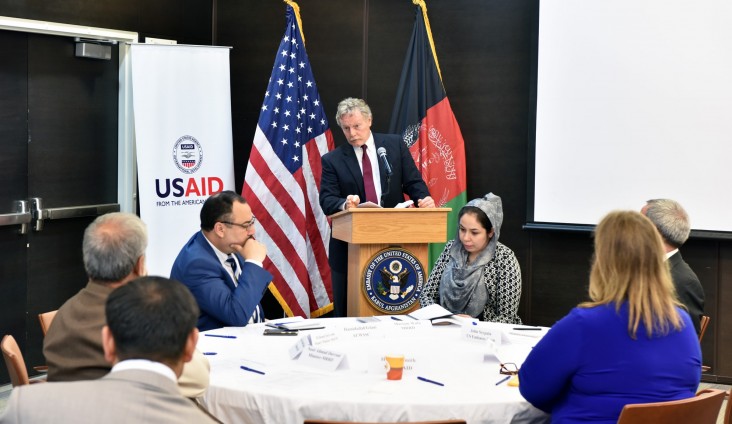
Good morning, Excellency Nasir Ahmad Durrani, Minister of Rural Rehabilitation and Development, Excellency Ali Ahmad Osmani, Minister of Energy and Water, representatives of the international community, civil servants of Afghanistan, civil society representatives, and all who work to improve access to rural water supply.
We’re glad all of you could be here today to talk little bit about water.
Water Fact #1 -Approximately 1.1 Billion People (1 in 7) Lack Access To Safe Water.
Water Fact #2- The damage and suffering caused by unsafe water is catastrophic.
Every year:
1.1 million people, mostly, children under the age of 5, die from diarrhoeal diseases directly attributable to unclean, unsafe water.
UNICEF estimates that approximately 1,000 children die every day due to diarrhoeal diseases, most of which could be prevented simply through access to clean water. A child dies every 90 seconds from a water-related disease.
Water Fact #3- The primary populations without access to clean water are found in Sub-Saharan Africa and Asia.
There are some areas in Afghanistan where water is scarce but for the most part, the problem is caused by inadequate infrastructure. The residents of these areas must constantly contend with the challenge of finding clean drinking water.
Every day, women and children spend approximately 125 million hours gathering water. This burden typically falls heaviest on women and girls, who spend up to 6 hours per day trying to find water for their families.
In Asia and Africa, women and children walk approximately 3.7 miles per day just to locate water.
Water Fact #4 - But progress is occurring…slowly
Since 1990, 2.6 billion people have been given access to clean water. And, thankfully, that number is still growing every year.
Here in Afghanistan… The Afghan government has made considerable progress in helping rural household’s access at least basic drinking water services, with an increase from 21 percent in 2000 to 54 percent in 2015, according to the World Bank’s Joint Monitoring Program.
The government, led by the Ministry of Rural Rehabilitation and Development, has committed to providing safe drinking water for 75 percent of the rural population by 2019.
I think all of us find this commitment commendable.
We’re gathered today to hear the results of a third-party evaluation of the 2009 – 2012 USAID Sustainable Water Supply and Sanitation Project.
The project installed wells and hand pumps across Afghanistan, bringing water to more than 600,000 people.
The evaluation was contracted to determine how many systems are still functioning properly and meeting the needs of the local communities.
The evaluators reviewed the community engagement process, overall sustainability of the investment, and areas for improvement in future projects.
Today, let’s not simply listen to the evaluation results, but really think about what worked, and what didn’t.
It is so important to act on our collective learning to improve our success rate in water projects.
USAID is a committed partner with the ministries to make the goal of improving the essential supply of clean water a reality and we will continue to follow through on our pledge to the Afghan people to improve their lives and the lives of future generations.
Thank you very much.







Comment
Make a general inquiry or suggest an improvement.